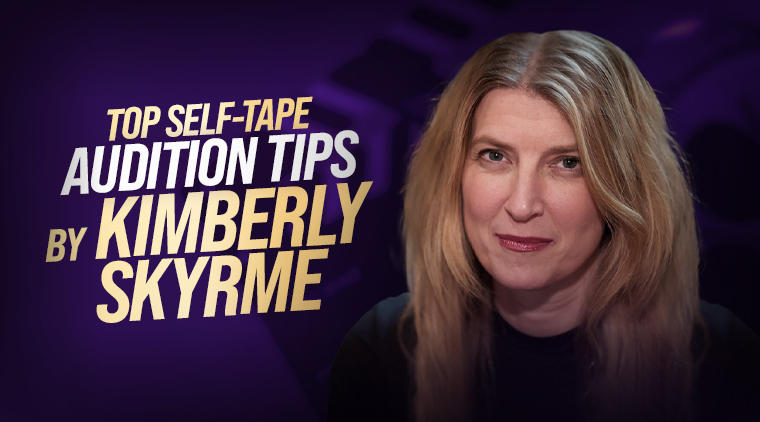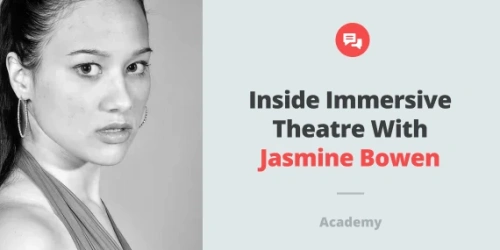Back on December 15, we had the honor to host an incredibly talented CSA Casting Director and producer Kimberly Skyrme. During our latest webinar, Kimberly shared all the essential tips & tricks on how to record a self-tape, leave the best impression on the casting team, and even a few tips on how to process all the emotions the audition process may stimulate.
About Kimberly Skyrme
Kimberly's experience as a Casting Director includes working for Hollywood and Independent Feature Films, Television Series, Government Agency Videos, Short Films, and Commercials. Her casting collaborations include Regional Casting Director for STARZ's The Girlfriend Experience and Netflix's House of Cards - Seasons 1-3. She also has Studio Features in 'Deep Impact,' 'True Lies,' 'Pelican Brief,' 'Random Hearts,' and 'Clear and Present Danger.' Most recently, she has worked for 'Move Me No Mountain' by Writer/Director on the rise Debbi Richards, several National Commercials, and more.
After 32 years in the industry, Kimberly has collected an impressive amount of experience and is a true industry expert and veteran. For us, it made perfect sense to invite her to share all the knowledge on how to succeed in the film industry.
When it comes to getting cast for your desired role, you want to get everything done right. Self-tapes and your audition are the key steps to getting where you want to be. We have briefly described the top rules from Kimberly on how to make it happen for YOU!
Preparation before recording a self-tape
Never underestimate the power of preparation, especially when it comes to self-tapes and auditions. You've got one shot, one opportunity to make it happen for yourself and take a step closer to turning your dreams into reality. Here's a list of 6 essential steps that should become a part of your preparation routine:
- Do your research. Start by researching the genre of the production to dive deeper into the character you'll portray.
- Learn the script before recording the self-tape. Try your best to learn the script by heart so you can focus on acting, not the paper management, while reading the lines.
- Focus on doing the job and not getting the job. Auditioning is simply the job of an actor - that's part of the process. The casting team always remembers talent who did a good job whether they landed the role or not.
- Reduce stress before recording a self-tape. The last thing you want to encounter are any technical difficulties which can be pretty nerve-wracking. It's critical to make sure that your setup is ready and works properly. This will let you focus on your acting and not your tech!
What to check in your set-up:
- Simple Background - remove any objects in the background that might distract the team
- Lighting - casting directors want to see you perfectly
- Sound - equivalent to light if not more important
- Quiet Room - make sure there are no unnecessary background noises, such as your dog barking or your family speaking. You want to make sure that your voice is the only sound included in the self-tape.
- Good Reader - Casting Director Kimberly Skyrme suggests you to find a friend who's an actor to support you with your self-tape as a reader.
- Camera - nowadays, it's not essential to invest thousands of dollars in a professional camera. Technologies have developed, and your phone camera is more than enough to shoot your self-tape.
- Have a positive attitude and be nice to everyone. No matter what happens, you want to be remembered as a person with whom it was easy to work with.
- Enjoy the process - be a storyteller. And finally, be ready to enjoy the process, learn from the process, and grow from the process of becoming an actor.
Tips and tricks on recording a self-tape
- Frame the shot. Before rolling the camera and proceeding with your self-tape, it's essential to be mindful of framing your shot. The best way to do it is - just above the waist and with little head room on the top. However, if you have received specific instructions regarding framing - be sure to follow them. In Casting Director Kimberly Skyrme's experience, there are a lot of cases when she can't send the self forward, because talent is either too far and it's impossible to understand what's going on OR talent is too close that it gets a little bit scary.
- Start performing right after the camera starts rolling. Remember about your energy. You want to be able to set the tone of the room and show that you are the storyteller. You must adapt the energy of the character and reflect it to everyone watching you. Most importantly, you should be telling the story the second the camera is on - that's when you reach the peak. It doesn't start with a word, it starts with a story.
- Watch your eye line. Casting Director Kimberly Skyrme cannot stress enough how important it is not to bore a hole through the wall or into the camera lens by looking at one spot. It's best to talk as if someone is standing on the right or left of the camera.
- What to wear? Wear nice simple clothes that fit you well and can be used for most characters or the clothes that insinuate the specific character. Avoid touching your clothes or hair (if portraying your character doesn't include it).
- Hair & Makeup. iMake sure hair color and makeup are appropriate for the role, and Casting Director can observe the length of your hair from the shot.
- Tattoos. If you have tattoos, hide them with makeup or have a release form from the tattoo artist.
What should you do after the self-tape has been recorded?
1. After the self-tape has been recorded, there is no need to apply any advanced video or audio editing. You don't want the Casting Director to think you've over-added some adjustments, so it would be best if you looked as natural as possible.
2. Before submitting the self-tape, double-check the casting call description to check the required way to submit a video file. This could be either:
- Via email.
- Via Casting Platform.
- Via Youtube, Google Drive, or other video platforms.
3. Keep an audition journal where you will reflect after each audition the following:
- Your feelings on how you think the audition went.
- Pick one thing you did well in your opinion - describe it
- Describe what would you do differently in your next audition.
4. Move on with your day, and don't spend hours and days in stress about your submission. What matters the most is that you did a good job and left the best possible impression about yourself.
All of the recommendations shared are with a 100% guarantee to improve your entertainment industry journey. Kimberly reminds us that there is a scientific proof between positive thoughts and success! Keep learning, become better with each day, and the life you desire soon enough will become your reality.
allcasting wishes you all the best of luck, and may you get cast! Check out this article on “What to do after an audition”.



